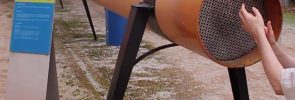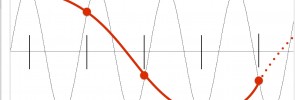
At the Parque de las Ciencias in Granada, Spain there is this long tube, open at the end nearest you and closed at the far end. We can calculate the length of this tube just from the audio recording, because we know the speed of sound. Here’s the waveform of part of the recording, showing […]
Continue reading...



